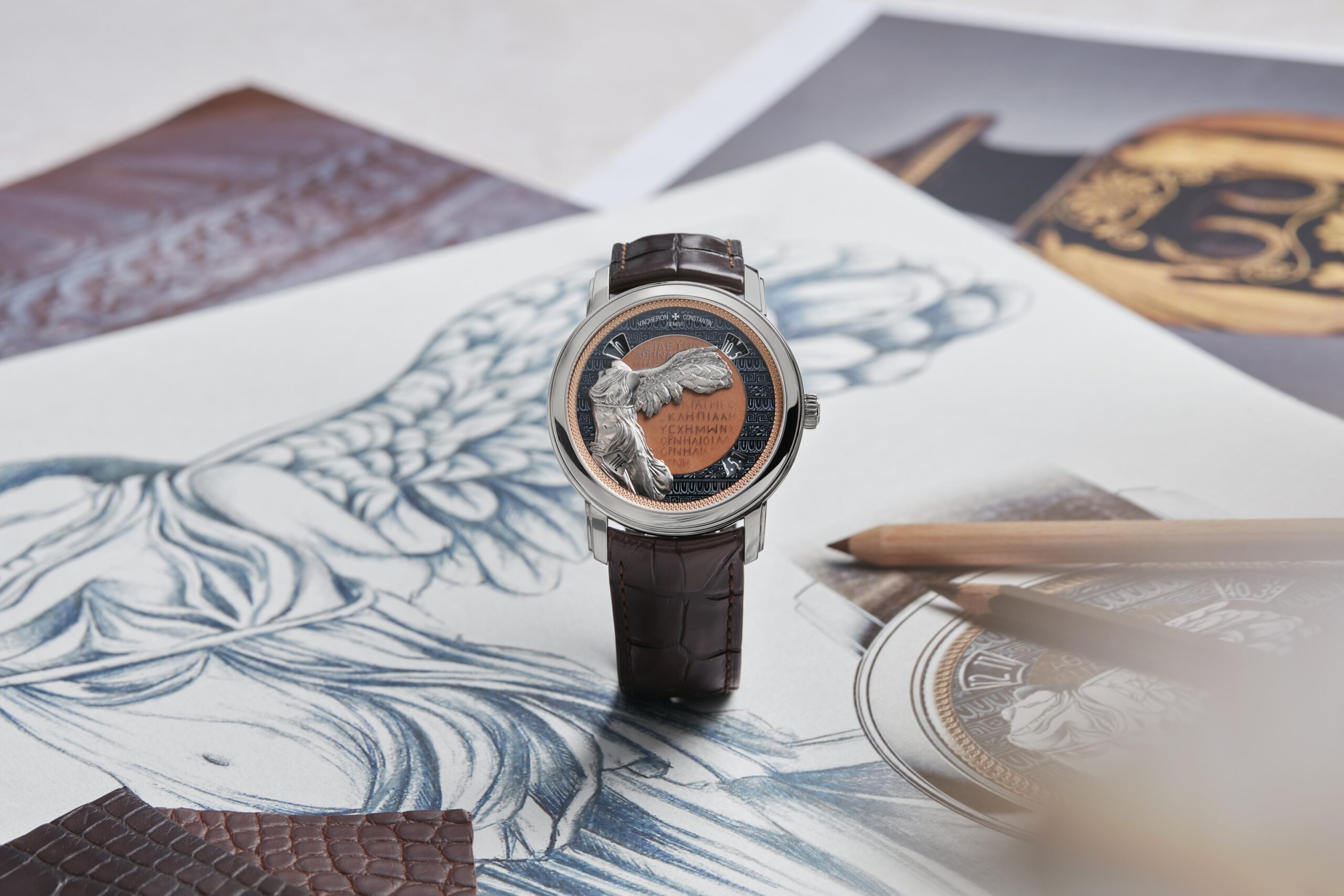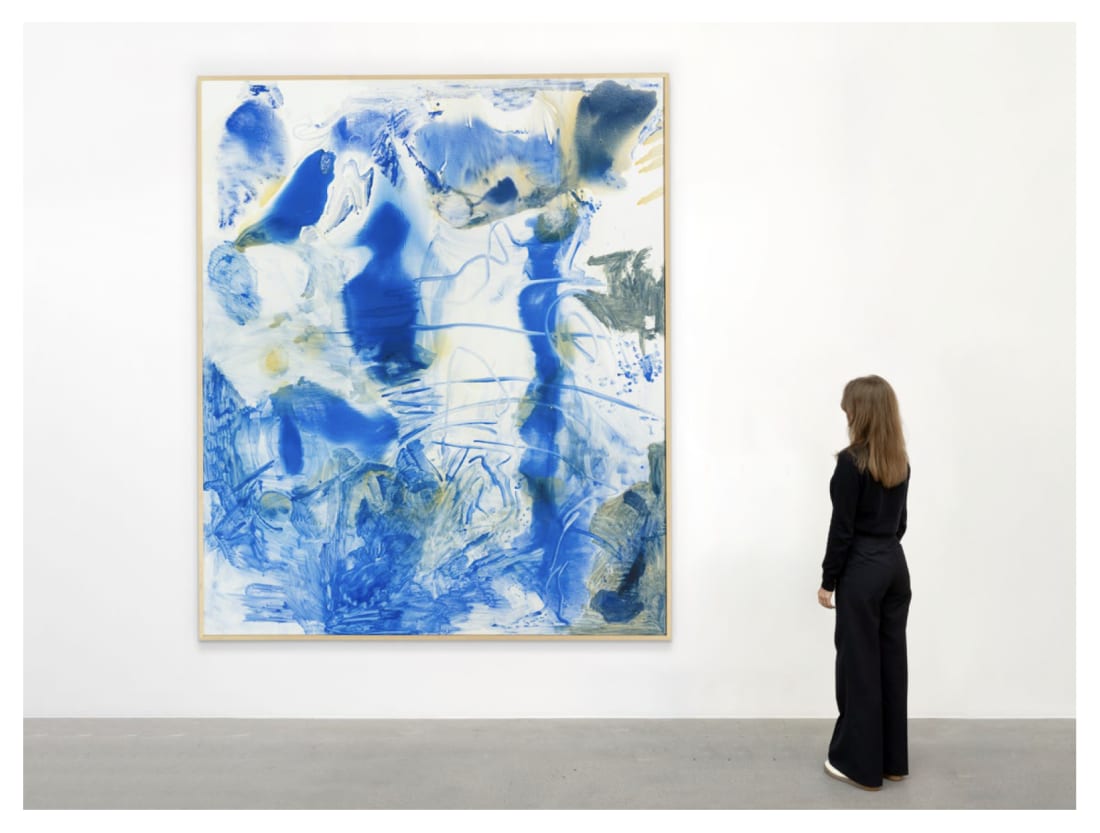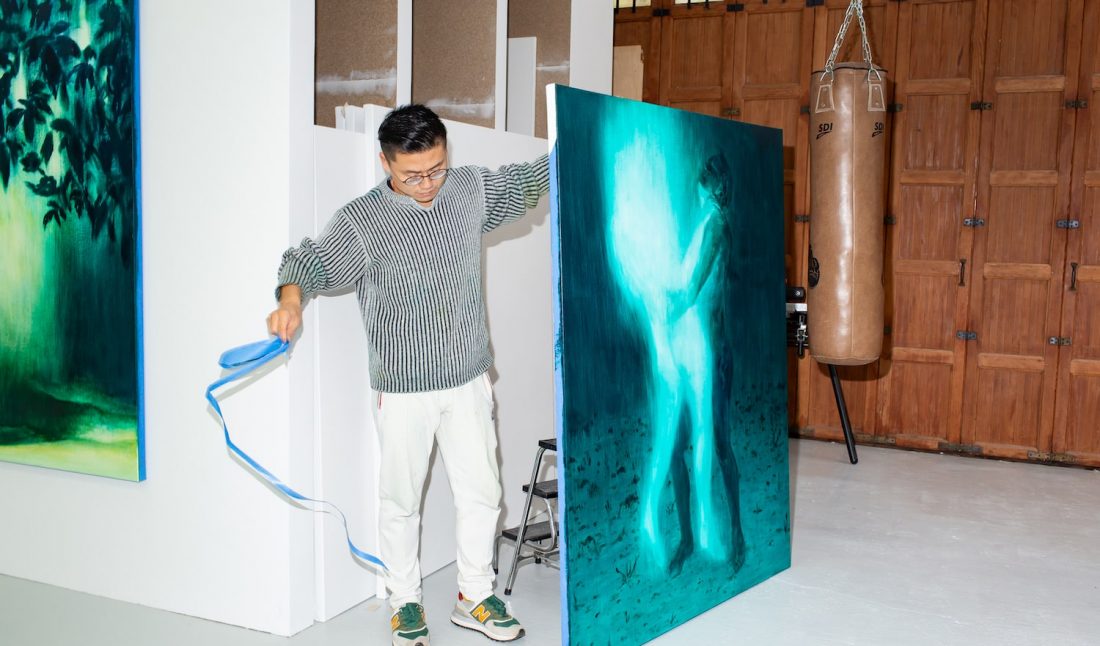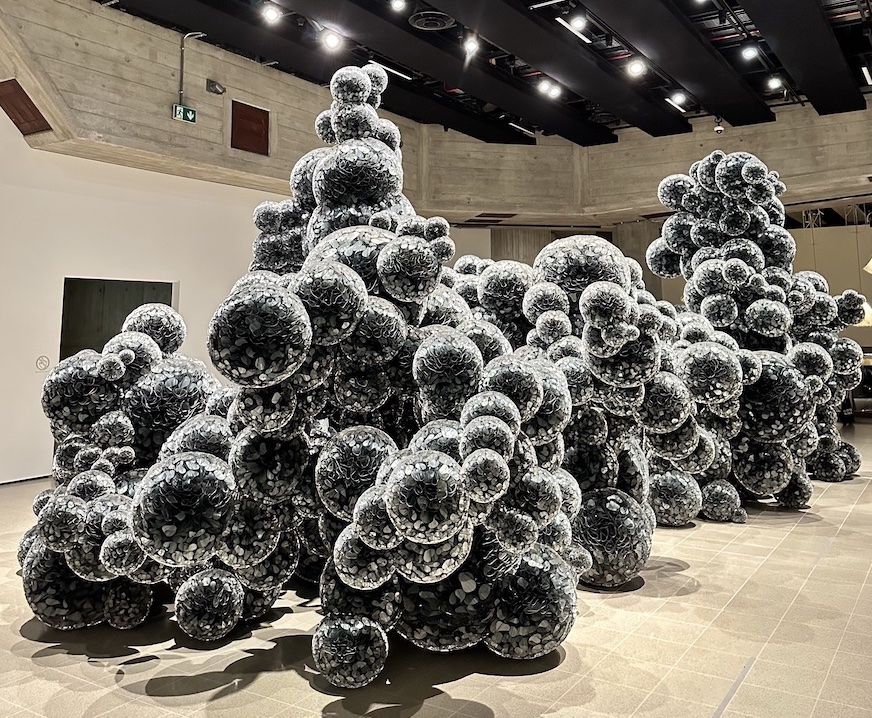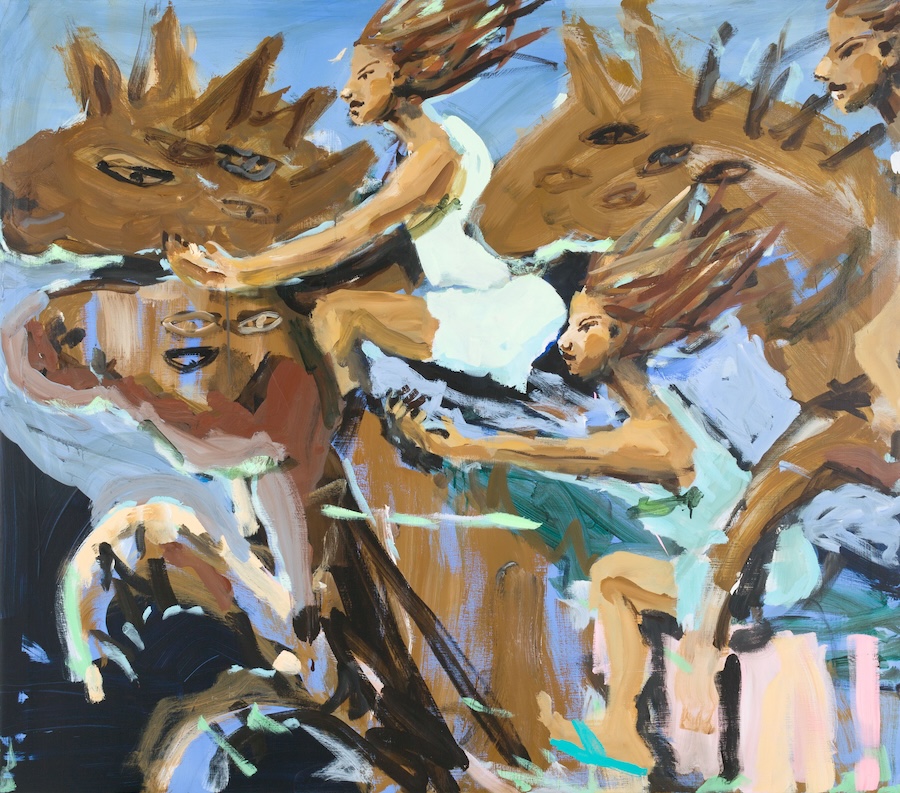Xie Lei’s solo exhibition “Mort heureuse” is currently open at Semiose gallery in Paris, open through March 15, 2025. On view is a series of new paintings by the Chinese artist who currently lives between Madrid and Paris. In near monochrome palettes of blue, green, and yellow we see orbs of light, ghost-like figures, and echoes of nature like scenes stumbled upon in a dream.
Lei, who was recently named one of four finalists for the 2025 Marcel Duchamp Prize, took the time to answer a few questions from Whitewall about capturing the ambiguity of life—and death—in painting.
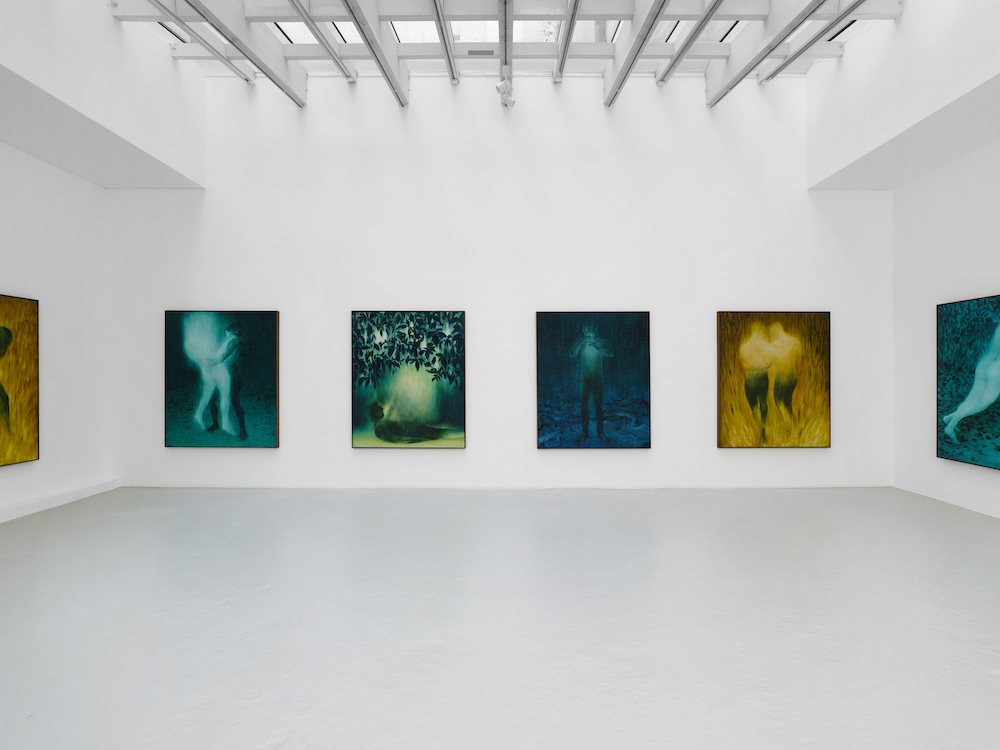 Installation view of Xie Lei at Semiose, photo by Aurélien Mole, courtesy of Semiose, Paris.
Installation view of Xie Lei at Semiose, photo by Aurélien Mole, courtesy of Semiose, Paris.
WHITEWALL : The titles “Chant d’Amour” and “Mort Heureuse” nod to Jean Genet and Albert Camus. How do these literary inspirations shape the conceptual foundation of these series? What led you to intentionally omit the articles “un” and “la” in the titles?
XIE LEI: Cinema and reading hold a big place in my life, as well as in my work. I discovered Jean Genet’s film, Un chant d’amour (1950),in China when I was almost twenty years old. The way Jean Genet stages the prisoners’ fantasies, their sexual frustrations, such as a warder’s voyeurism, is impressive. His poetic and suggestive vision of what goes on behind closed doors is fascinating. I have always wanted to take this film as a starting point for a project. The time came twenty years later, in 2022, for the exhibition Chant d’Amour, my first solo exhibition at Semiose gallery.
I read a lot; I have always read a lot since I was a child, for example Pu Songlin’s and Mo Yan’s fantasy tales, then Western literature, like Edgar Allan Poe, Jorge Luis Borges, Italo Calvino… This literature has stimulated my imagination and my thinking. But I could name other authors, too. A Happy Death [La mort heureuse] (1936-1938) is in fact Albert Camus’s first book, written before The Outsider (1942), but it was not published in his lifetime. I found out about it almost by chance. As with the film Un chant d’amour, I was first drawn to the title. An oxymoron, the seemingly impossible association of two contradictory realities.
“Cinema and reading hold a big place in my life, as well as in my work,”
Xie Lei
I have borrowed the titles of this novel and this film as starting points, as they have acted as stimuli. My paintings have no direct connection to the content of either Camus’s or Genet’s works; they are not a representation of them. This imaginary correspondence with Genet and Camus may suggest what inspiration or influence means to me. This is the reason why the titles of my exhibitions do not use Genet’s and Camus’s exact titles. The omission of the articles represents an emancipation from their contents. Also, and above all, I want to give an infinite dimension.
Xie Lei’s Dreamlike Paintings at Semiose in Paris
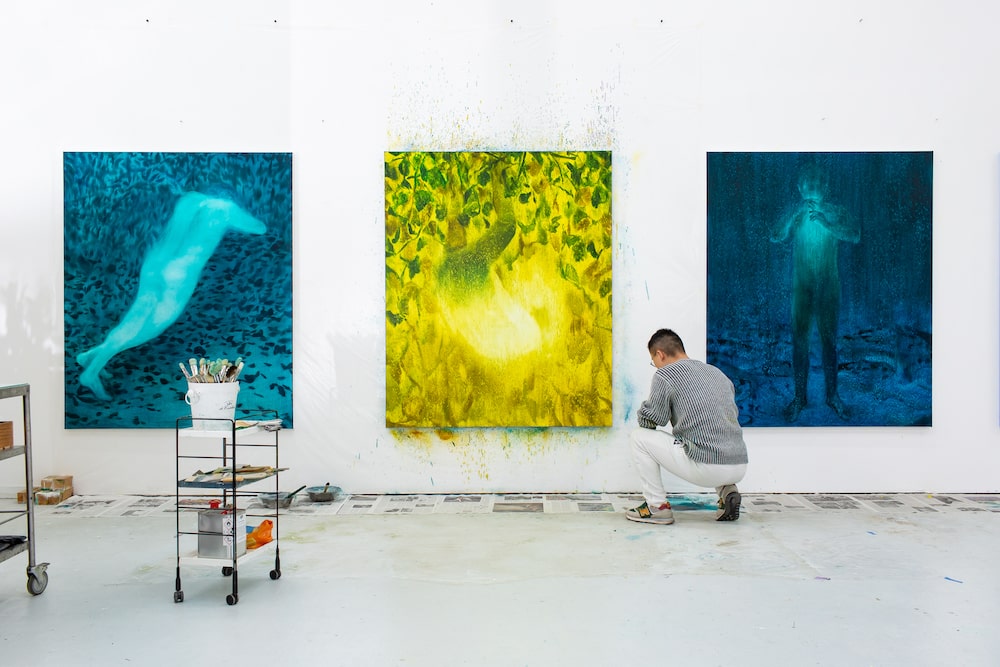 Xie Lei’s studio, photo by Margot Montigny, courtesy of Semiose, Paris.
Xie Lei’s studio, photo by Margot Montigny, courtesy of Semiose, Paris.
WW: The term “oneiric” or “dreamlike” is a recurring theme in your work. How do dreams and unconscious drives, like the death drive, influence your compositions and subject matter?
XL: Dreamlike?! Of course, the dreamlike dimension is important to me, but my paintings are never a strict representation of my dreams. I would rather they triggered a reaction in the viewers. Although we are talking about dreams here, I must admit that I prefer nightmares in that sense. They reveal other aspects and unveil other shams.
I have mentioned my interest in beheading in Western art, a real death drive. It was a discovery to see how this—one would think—unbearable violence was represented, how it was disguised to take on the appearances of the sacred and of sacrifice, how it could be dressed with aesthetics and sensuality. So I wondered: how can this macabre violence, so deeply imprinted on humanity’s unconscious, and which still cannot escape this death drive, be represented today?
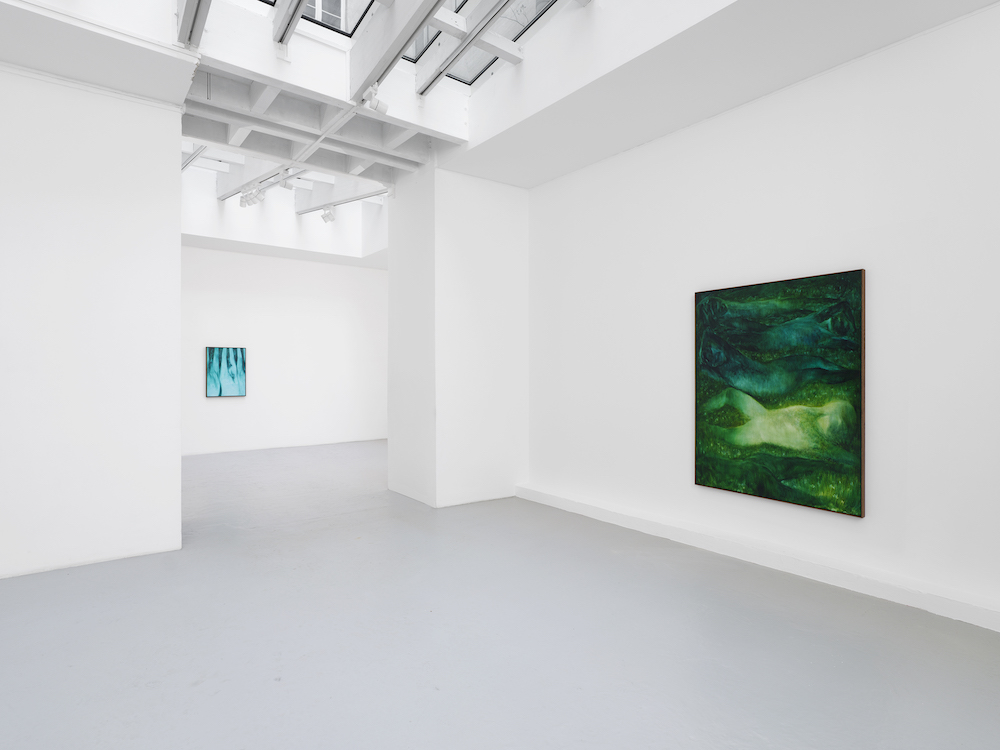 Installation view of Xie Lei at Semiose, photo by Aurélien Mole, courtesy of Semiose, Paris.
Installation view of Xie Lei at Semiose, photo by Aurélien Mole, courtesy of Semiose, Paris.
WW: Over the years, your figures have become increasingly indistinct, dissolving into the backgrounds of your paintings. Could you share more about the progression of this approach and its significance in your work?
XL: Personally, I do not seek what one might call a “meaning” in my works. I leave it to the viewers. As for the figures’ indistinct aspects, this initially stemmed from an empirical approach. I was seeking a disappearance that did not hide apparition. This is what is fascinating in painting, and why I have chosen it, or it has chosen me: the ability to make several realities coexist in one image.
“I was seeking a disappearance that did not hide apparition,”
Xie Lei
Xie Lei on the Process of Painting
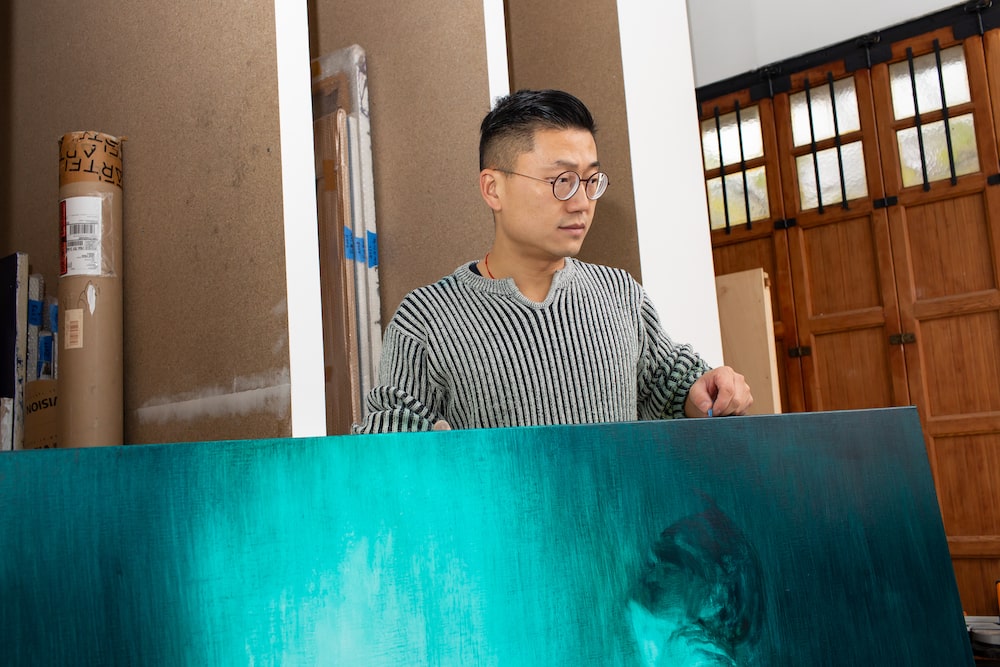 Xie Lei’s studio, photo by Margot Montigny, courtesy of Semiose, Paris.
Xie Lei’s studio, photo by Margot Montigny, courtesy of Semiose, Paris.
WW: Your unique techniques, such as scratching and scraping with brushes, paper, and even your hands, create a distinctive texture and feel. How do these tactile processes contribute to the themes of ambiguity and indefinability in your paintings?
XL: Artists have used these scratching and scraping techniques for centuries. I have also experimented with them in my process, like an element, but my work is more than that. The evolution of paint leads naturally to add one layer after another. For me, this build-up is not about adding for the sake of adding. On the contrary, I remove layers and make visible the white of the gesso or canvas, to open up other fields.
“Artists have used these scratching and scraping techniques for centuries.”
Xie Lei
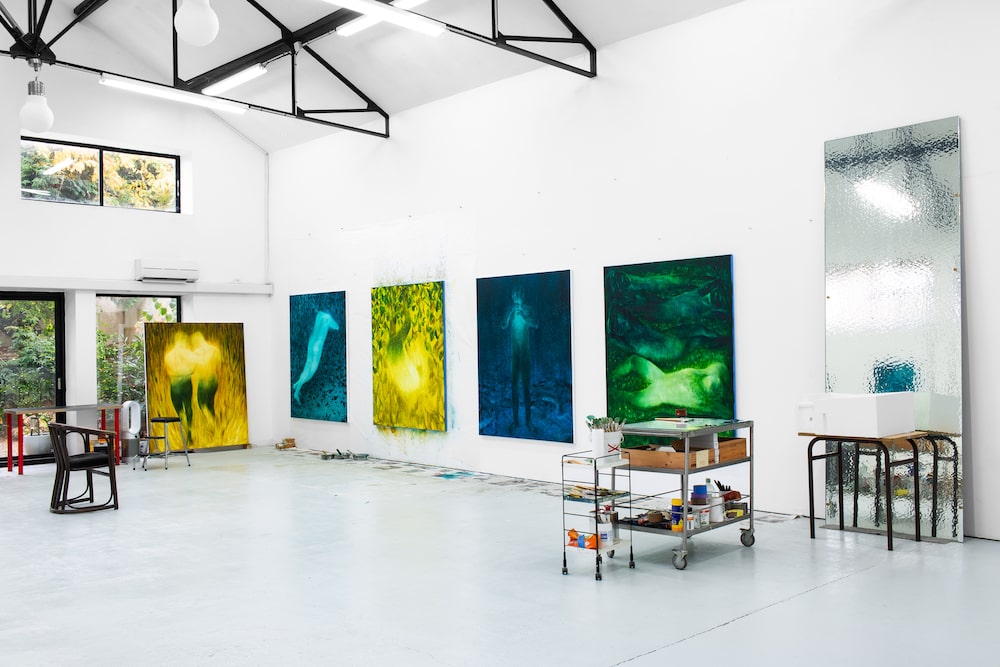 Xie Lei’s studio, photo by Margot Montigny, courtesy of Semiose, Paris.
Xie Lei’s studio, photo by Margot Montigny, courtesy of Semiose, Paris.
WW: Despite avoiding black and white, your palette achieves incredible depth and complexity. How do you use color to convey tension, duality, and the oxymoronic qualities you identify in your work?
XL: For years, I have used what is called camaïeu in French [a subtle range of shades of one colour], which in English is translated as monochrome. You see the semantic path! Camaïeu is untranslatable. So this is a set of both complex yet limited colours in order to simplify it. That is what I like, what expresses the ambiguity of situations and tensions that I suggest in my paintings.
WW: You’ve posed the question, “How can one represent ambiguity in painting?” How would you answer this now, after exploring this theme extensively in your recent works?
XL: Atmosphere, the unsaid, these have always characterised human situations. This question is therefore inexhaustible and I try to answer it, today, in its particular context. While working on a series of paintings, Slumbers, which depicts beings between death and sleep, suffering and pleasure, I learnt that “petite mort” [little death, in French] meant orgasm. What an ambiguity! What an oxymoron, almost!
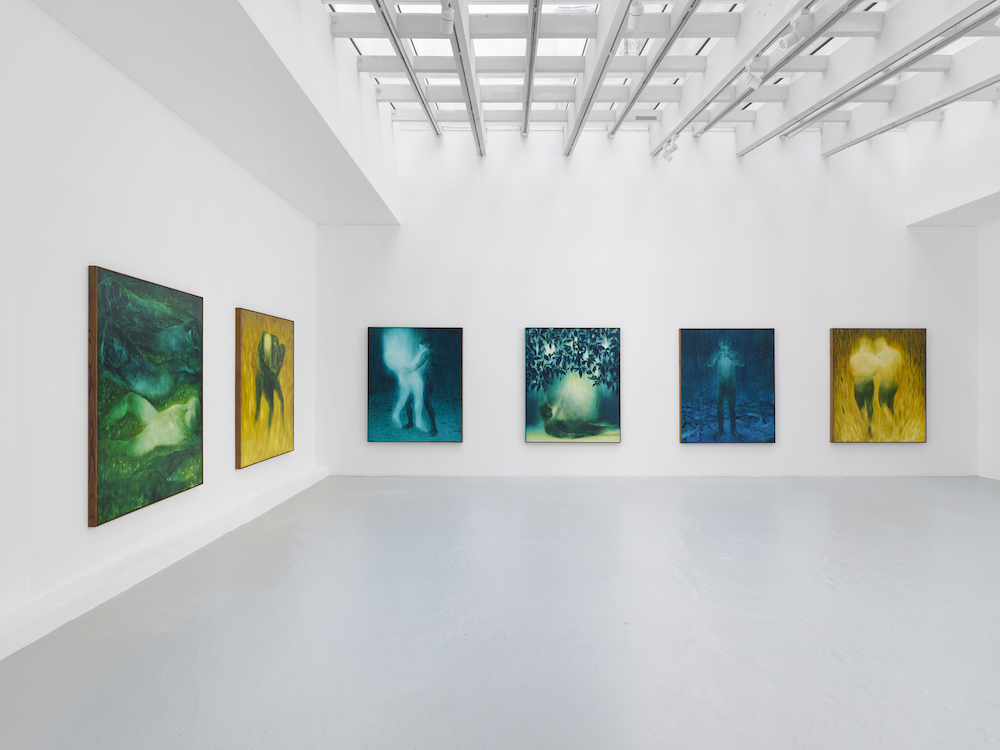 Installation view of Xie Lei at Semiose, photo by Aurélien Mole, courtesy of Semiose, Paris.
Installation view of Xie Lei at Semiose, photo by Aurélien Mole, courtesy of Semiose, Paris.
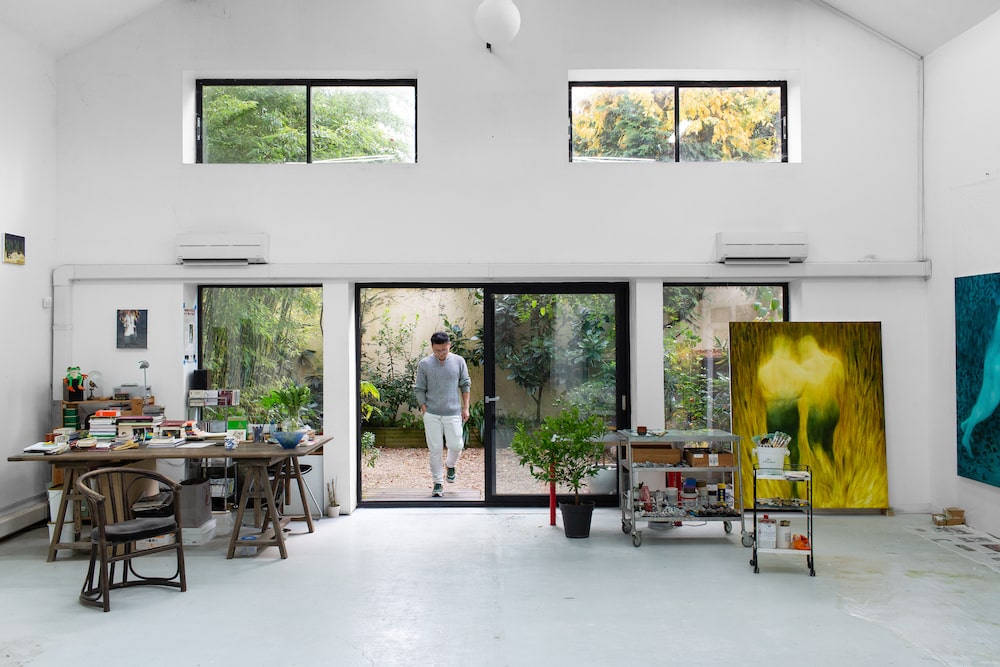 Xie Lei’s studio, photo by Margot Montigny, courtesy of Semiose, Paris.
Xie Lei’s studio, photo by Margot Montigny, courtesy of Semiose, Paris.

